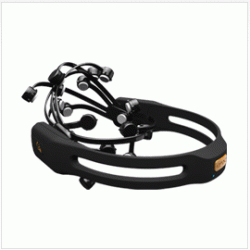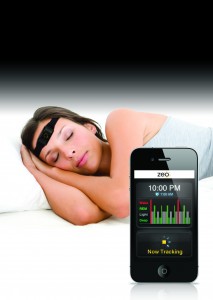The Present State of Brain-Machine Interfaces
We live in an era where the rapid advances in technology are constantly changing how we perceive and interact with the world around us. The question on everyone’s mind is always “what’s next?” The answer: brain-machine interfaces. For the average consumer, brain-computer interfaces are becoming increasingly available on the mass market and their current uses offer a wide range of fascinating opportunities.
A company that’s been in the news a lot lately is NeuroVigil. Their product known as the iBrain has been used to help world-renowned astrophysicist Steven Hawking communicate with a computer simply by thinking. Hawking, who suffers from Lou Gehrig’s disease, developed his own solution to allow him to speak by twitching his cheek to select words from a computer. In its current state, the iBrain is still slower than Hawking’s solution, but NeuroVigil’s founder MD Philip Low hopes that it will eventually be possible to read thoughts aloud. NeuroVigil also made the news by signing a contract with Roche, a major Swiss pharmaceutical company, to use the iBrain in clinical studies for evaluating drugs for neurological diseases.
So how does the iBrain actually work? The iBrain uses one sensor to measure brain signals by means of specialized algorithms. Surprisingly easy to use, NeuroVigil claims that its software makes up for using only one channel. A competing device, the EPOC, made by Emotiv uses a multitude of sensors. The EPOC is a neuro-headset that looks like headphones with sensors extending in all directions. These sensors pick up electrical signals that our brains produce while we are awake or asleep; essentially an EEG recorder. These measurements are not accurate enough to pick up what individual neurons in our brain are doing, but they can provide a rough idea of overall brain activity. Users of the headset learn to think specific thoughts for which the EPOC learns the related brain signals corresponding to a certain command, such as moving the mouse to the left. Emotive has an online store with dozens of applications for the headset and there is also a Mind Workstation for research purposes.
The key strategy of another company, Zeo, is sleep research. Zeo offers a wireless headband to monitor sleep patterns that connect to smartphones using a Bluetooth link. Looking to enter the research scene with their innovative technology at a bargain price, Zeo hopes that it can satisfy the huge demand for a sleep aid product. In a similar manner, NeuroVigil wants to use a smartphone processor to map people’s mind while they sleep using the unique brain ‘signatures’ to diagnose neurological disorders such as Alzheimer’s, depression and autism, which again increases the number of potential users. An increasing number of people want to do their own health monitoring and new, inexpensive, wireless sensors and data processing by smartphone apps can help in this goal. Cheap brain-computer interfaces are the next step in this health-monitoring trend and will hopefully lead to newer and much cooler extensions of our mind.
Sources:



February 2, 2015
What a great reusroce this text is.